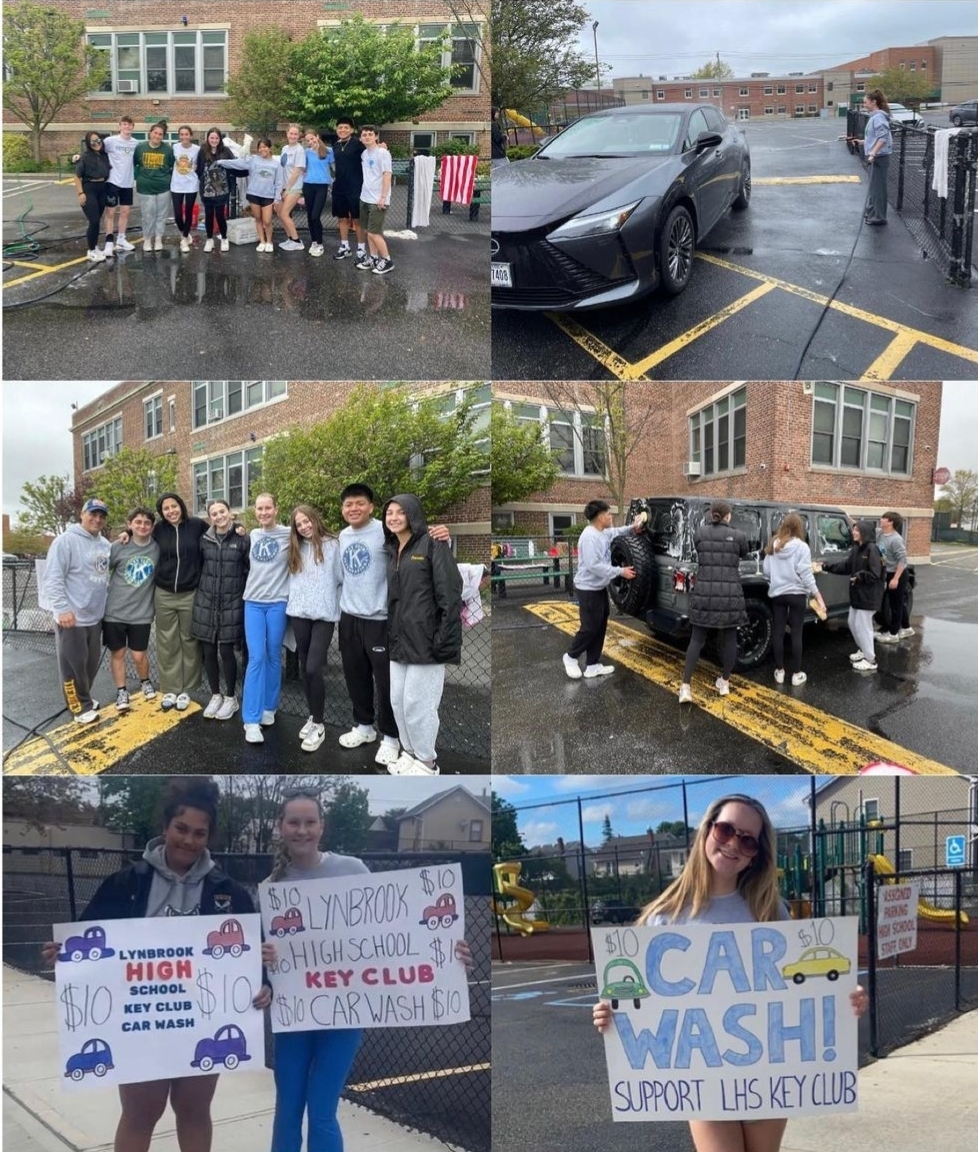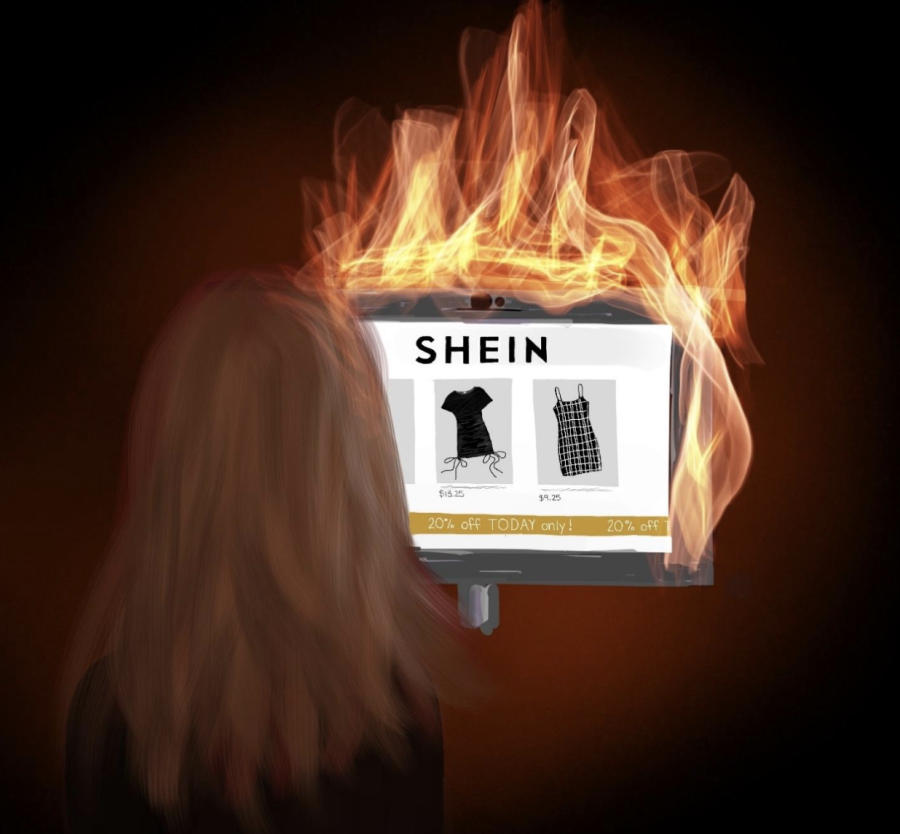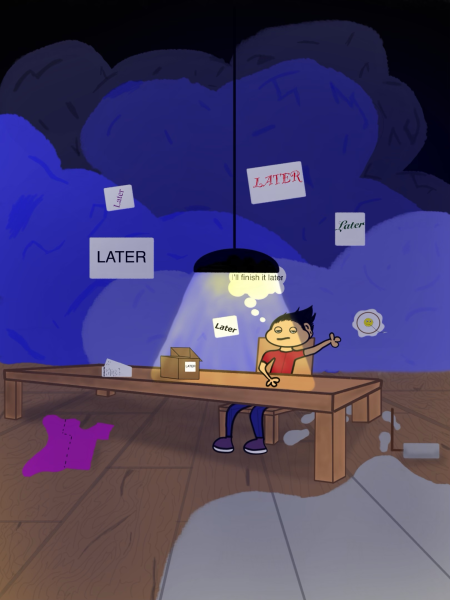The High Cost of Low-Cost Fashion
When people purchase new clothes, there is a good chance they are not thinking about the detrimental impact their singular purchase has on the world–especially those impacts caused by purchasing from fast fashion retailers. When someone sees a trendy clothing item on the internet but cannot afford it, there is a good chance SHEIN or another fast fashion site has a knock-off version for an extremely low cost. Due to this efficiency, SHEIN has proven to be a very popular choice among shoppers. What many do not realize is that by purchasing from brands like SHEIN, they are giving money to a company that exploits laborers and contributes to climate change just through the click of a button. Thus, it is crucial for shoppers to become educated about their purchases and think before they buy.
The environmental impact of producing cheap clothing primarily concerns carbon dioxide emissions and extensive usage of water. In fact, the manufacturing of clothing is “responsible for 10% of the world’s carbon emissions,” according to Make Fashion Better (makefashionbetter.com), an organization that champions sustainable fashion. This is a huge number when put into perspective: in total, 37.12 billion metric tons of global carbon emissions are produced annually, according to Statista (statista.com).
With cotton being the most commonly used clothing material, there is an extreme waste of water required for its production. As reported by Florida State University’s Sustainable Campus, it takes 2,700 liters of water–enough drinking water for 900 days–just to make one cotton t-shirt. With this in mind, imagine how much water SHEIN uses to manufacture a day’s worth of clothing orders. Junior Olivia Lanteri commented, “It’s incredibly saddening to know that we’ve gotten to the point where we’ve become so obsessed with the ‘new’ that we don’t think about the consequences.”
Aside from the overuse of water, the pollution of water is also a factor in clothing production. Ever wonder what happens to clothing that is not purchased? Well, it is compressed into 1,000-pound bales that are then exported overseas to low and middle-income countries. There, they will become solid waste, clogging parks, rivers, and greenways due to the lack of a proper waste system to handle them, according to BioMed Central (biomedcentral.com). This waste will not decay because it is mostly made from synthetic materials like polyester and its various forms, which are notoriously difficult to break down. These fibers will end up in the sea, freshwater, and high glacier peaks. Additionally, untreated dyes are released into nearby water sources when they are not used in clothing production. Both humans and wildlife can suffer severe health problems from the pollution.
Behind the scenes of the process are millions of laborers being forced to work in sweatshops. The conditions in which these employees work is simply inhumane, and there are no safety measures taken to protect them. At SHEIN factories, laborers work 18-hour days, earning about two cents for each clothing item they produce. And, despite SHEIN’s claim of having “wages and benefits above the industry average,” there is zero proof of this. In Guangzhou, China, it was found that SHEIN employees were working 75-hour weeks with only one day off per month, according to Hazards magazine, an organization that exposes inhumane working conditions. It is completely unacceptable that these factories are still in practice despite having illegal conditions for their employees. Junior Charles Reis was “shocked” to hear this statistic. Reis expressed, “The fact that these employees are essentially being abused and not compensated nearly enough makes me really upset.”
There are many ways that consumers can help stop the impacts of fast fashion. Instead of buying mass amounts of low-quality clothing frequently, it is much better to purchase few, sustainably-made items every so often. Buying second-hand clothing from a thrift or consignment store is yet another way to mitigate purchased clothing’s environmental impact. Also, instead of throwing away clothing items, donate them to a local shelter or pass them down to a friend or family member. Junior Kerry Cullen believes that “we need to stop making clothes ‘trendy’ and start wearing things we like as an individual.” Cullen suggested as a solution, “It’s better to just stick with what you like so you do not contribute to the overconsumption of clothes and of these brands.”
Mainly, it is important to spread awareness on the topic of fast fashion. It is the responsibility of consumers to stop supporting immoral business practices. Lanteri added, “It’s always good to research the brands you shop at and educate yourself on how they produce their clothes. From there, you will become a more mindful consumer.” If more people were better informed of the detrimental manufacturing of cheap clothing, they might be inclined to make more ethical choices while shopping. After all, no clothing should be purchased or worn that has this much of a negative impact on people and the planet.

Hi, my name is Eliza Fucci, and I’m a member of the Class of 2024. I am also a part of GirlUp, S.T.A.R.T., S.K.I.P., and NHD club. In my free time, I...










































